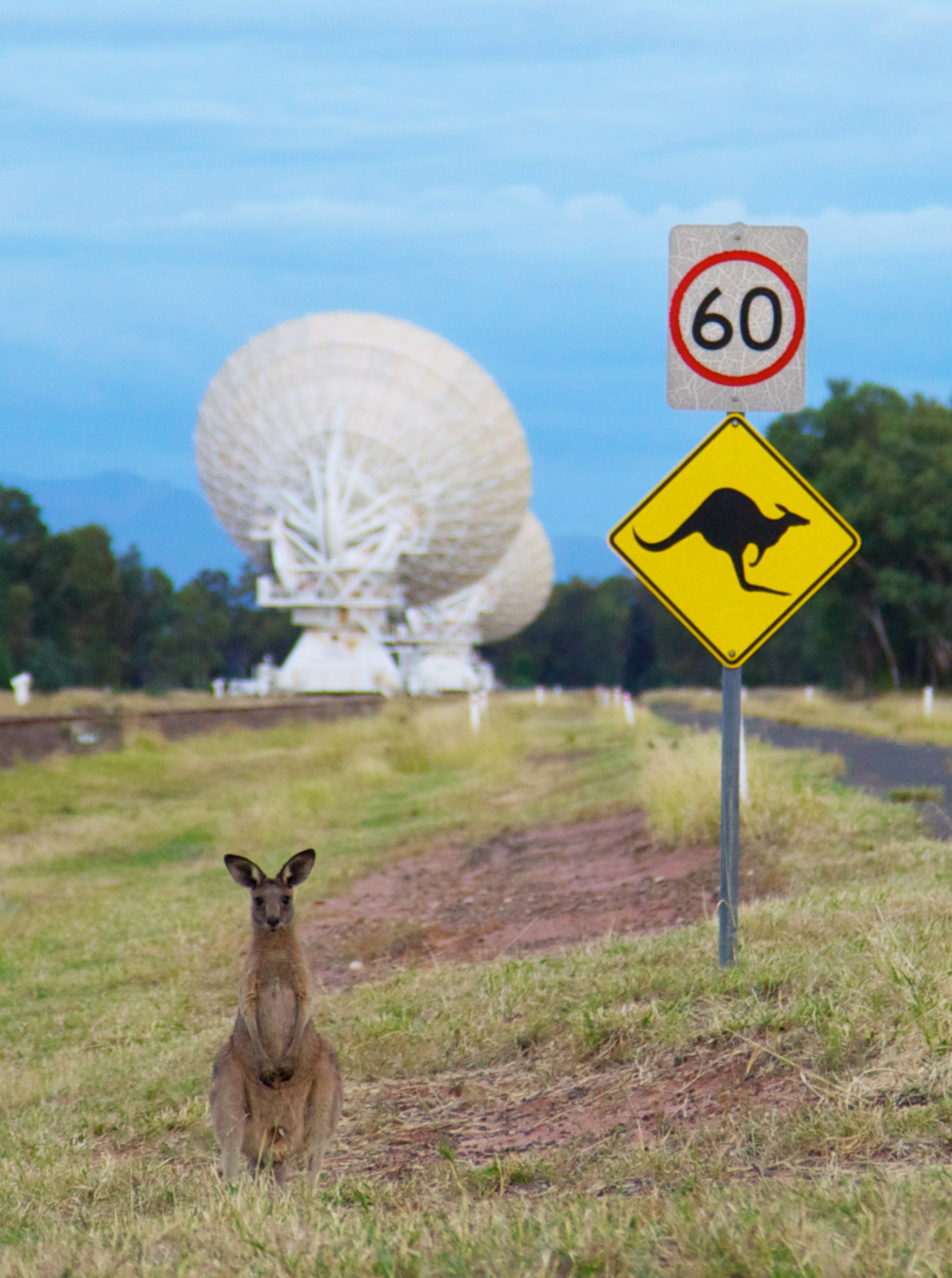 Whether you’re just passing through, or staying in the region for a while, our Australia Telescope Compact Array is a fascinating place to visit.
Whether you’re just passing through, or staying in the region for a while, our Australia Telescope Compact Array is a fascinating place to visit.
Take a look at the astronomy exhibition
The six white antennas that make up the Compact Array, on Gomeroi Country are an impressive sight. They’re connected by wide-gauge railway track so that their position can be changed to meet the needs of the science teams using the instrument.
You can see the antennas from a small visitors centre, which also features an exhibition and an audiovisual presentation. If you’re lucky, you might even see a change in the configuration of the antennas.
The visitors centre is usually unstaffed, however, group tours can be organised by contacting the visitors centre in advance.
Bring a picnic
Kangaroos and galahs are regular visitors to the observatory, and occasionally emus, echidnas and (very occasionally) koalas pay a visit too. Bring a picnic and stay a while to enjoy the woodland setting; a barbeque area is also available.
Other regional attractions
There’s a lot to see and do in the north-west region:
- Yarrie Lake, a 1.5 km-diameter circular lake located about 10 km south-west of Paul Wild Observatory, is a beautiful spot for a picnic.
- Mount Kaputar National Park is to the east of Narrabri. Camping areas and cabins are located at Dawsons Spring and Bark Hut.
- Between Narrabri and Coonabarabran to the south-west lies Pilliga Forest. With 2000 km of public access trails, the area is a mass of wild flowers in spring and is home to emus, kangaroos and wallabies.
- On the edge of Warrumbungle National Park near Coonabarabran is Siding Spring Observatory, home to Australia’s premier optical and infrared telescopes. There is a visitors centre, viewing gallery of the Anglo-Australian Telescope, and spectacular views of the national park.
Whether you’re just passing through, or staying in the region for a while, our Australia Telescope Compact Array is a fascinating place to visit.
Take a look at the astronomy exhibition
The six white antennas that make up the Compact Array, on Gomeroi Country are an impressive sight. They’re connected by wide-gauge railway track so that their position can be changed to meet the needs of the science teams using the instrument.
You can see the antennas from a small visitors centre, which also features an exhibition and an audiovisual presentation. If you’re lucky, you might even see a change in the configuration of the antennas.
The visitors centre is usually unstaffed, however, group tours can be organised by contacting the visitors centre in advance.
Bring a picnic
Kangaroos and galahs are regular visitors to the observatory, and occasionally emus, echidnas and (very occasionally) koalas pay a visit too. Bring a picnic and stay a while to enjoy the woodland setting; a barbeque area is also available.
Other regional attractions
There’s a lot to see and do in the north-west region:
- Yarrie Lake, a 1.5 km-diameter circular lake located about 10 km south-west of Paul Wild Observatory, is a beautiful spot for a picnic.
- Mount Kaputar National Park is to the east of Narrabri. Camping areas and cabins are located at Dawsons Spring and Bark Hut.
- Between Narrabri and Coonabarabran to the south-west lies Pilliga Forest. With 2000 km of public access trails, the area is a mass of wild flowers in spring and is home to emus, kangaroos and wallabies.
- On the edge of Warrumbungle National Park near Coonabarabran is Siding Spring Observatory, home to Australia’s premier optical and infrared telescopes. There is a visitors centre, viewing gallery of the Anglo-Australian Telescope, and spectacular views of the national park.
